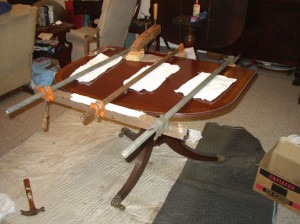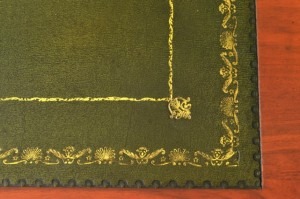A Closer Look at Antique Restoration
As the years pass, antique furniture will inevitably suffer from wear and tear such as chipped timber, ripped fabric and scratched varnish. One option is to restore the piece to its original condition. This can involve everything from minor cleaning work to major repairs depending on the type of furniture and the extent of the damage.
 The process of restoring antiques has to be done perfectly so as to retain the original appearance and qualities of the item. A poor job will strip the furniture of all its historical and monetary value so it’s important to hire someone experienced in the different methods available. A true professional will help retain or even increase the item’s value once the restoration is completed.
The process of restoring antiques has to be done perfectly so as to retain the original appearance and qualities of the item. A poor job will strip the furniture of all its historical and monetary value so it’s important to hire someone experienced in the different methods available. A true professional will help retain or even increase the item’s value once the restoration is completed.
Original Materials
If possible, a damaged antique item should be restored using the exact tools and substances it was created from. For instance, hand planes can be used instead of electric lathes and fish glue can be applied instead of more modern, synthetic substances. In this way, the expert can remove any damage without detracting from the overall value of the piece. Using more modern methods can actually remove the label of ‘antique’ from these items and place them into more standard furniture categories.
True Craftsmanship
Before restoration begins, the item will be thoroughly assessed for damage, loose or missing parts and any build up of dirt or grime.
A plan is made, and can incorporate a range of techniques and skills required to restore the antique piece to it’s original beauty, while not detracting from it’s authenticity. Repairs may be cosmetic, such as stripping and reapplying a finish, or more structural, requiring replacing missing elements or repairing damaged wood or fabric.
 For example, let’s take a look at how we create new leather inserts for our antique writing desks:
For example, let’s take a look at how we create new leather inserts for our antique writing desks:
We start with natural vegetable tanned leather.
The leather is then hand coloured with a colour solution, carefully mixing the powdered pigments to achieve the desired colour.
This colour is then sealed with a professional quality leather lacquer and an ochre or walnut stain applied to deepen the shade and add an antique look. Another seal is applied to lock in the vibrancy and warmth of the colour and protect it from wear. Depending on the desired finish, this process may be repeated.
Gold tooling is added by meticulously applying gold leaf, burnished to just the right brightness.
Finally, the leather is hand waxed and buffed and placed into the desk recess, ready to be enjoyed by a new owner.
Each of our antiques is lovingly restored by some of the country’s most talented craftsmen to ensure they are in the best possible condition before being added to our stock. For beautiful examples of their work, browse our online collection of antique furniture.

